Despite long fog-related delays in the travel last friday, the team of 4 has arrived in one piece: paediatric consultant Dave Laws, oculoplastics consultant John Roberts-Harry, medical electronics engineer Paul Lawrance, and myself, Rhys Dumont Jones, orthoptist.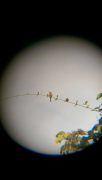
We had a good weekend which was entirely, definitely, 100% filled with productive work sessions, and only a tiny smidgeon of relaxation time. 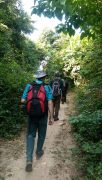 We did have a good early morning bird watching trip, and a very valuable meeting with the senior management team of the hospital, in which we reevaluated its progress, and what our plans were for the upcoming week.
We did have a good early morning bird watching trip, and a very valuable meeting with the senior management team of the hospital, in which we reevaluated its progress, and what our plans were for the upcoming week.
We arrived today in Sheikh Zayed Regional Eye Care Centre (SZRECC) 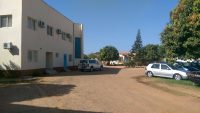 and were immediately bowled over by the generous welcome of the staff and students. It was great to catch up with old acquaintances, and be introduced to some new faces too. We convened in the lecture theatre at 08:30 sharp, where a full hall of ophthalmic practitioners, doctors and ROTP (regional ophthalmic training programme) students awaited.
and were immediately bowled over by the generous welcome of the staff and students. It was great to catch up with old acquaintances, and be introduced to some new faces too. We convened in the lecture theatre at 08:30 sharp, where a full hall of ophthalmic practitioners, doctors and ROTP (regional ophthalmic training programme) students awaited.
Today’s morning teaching session was held by Dave and John, who respectively covered the topics of world blindness, and glaucoma.
We were then taken to the clinics where many patients already waited. The booking clerks had arranged for children in particular to be brought during our visit, and today’s clinic promised many interesting and unusual challenges.
For those unfamiliar with the clinic system: the waiting room is unlocked at around 9-9:30, and the room filled with patients until fit to burst, and no more can physically be admitted. There is no agreed finish time, staff only leave once all patients have been seen.
I can only speak for myself of course: I had a long and tiring day, 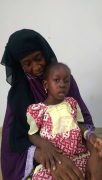 over 30 children came through the door of the testing room. It seemed as if the pile of notes was constantly growing and never even being dented for all our efforts. There was a huge range of ocular pathology, over half of the children having visual impairment in at least one eye, due to reasons such as cataracts (infantile and traumatic), ocular albinism, infection and corneal scarring. The ophthalmologists are planning to admit as many of these children as possible to remove cataracts, and restore some useful sight, potentially a life-changing improvement. I found it difficult to teach effectively with such a volume of patients requiring assessment, but the staff I was working with were energetic and very keen to learn. We have (slightly) quieter sessions planned later in the week to go over techniques in visual assessment in more detail.
over 30 children came through the door of the testing room. It seemed as if the pile of notes was constantly growing and never even being dented for all our efforts. There was a huge range of ocular pathology, over half of the children having visual impairment in at least one eye, due to reasons such as cataracts (infantile and traumatic), ocular albinism, infection and corneal scarring. The ophthalmologists are planning to admit as many of these children as possible to remove cataracts, and restore some useful sight, potentially a life-changing improvement. I found it difficult to teach effectively with such a volume of patients requiring assessment, but the staff I was working with were energetic and very keen to learn. We have (slightly) quieter sessions planned later in the week to go over techniques in visual assessment in more detail.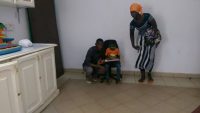
I will be writing a daily blog to keep the internet posted about my experiences here, so tune in tomorrow for another installment!


1 response so far ↓
1 Suzanne Martin // Nov 7, 2017 at 12:44 PM
Thanks for the update Rhys. Keep in touch!